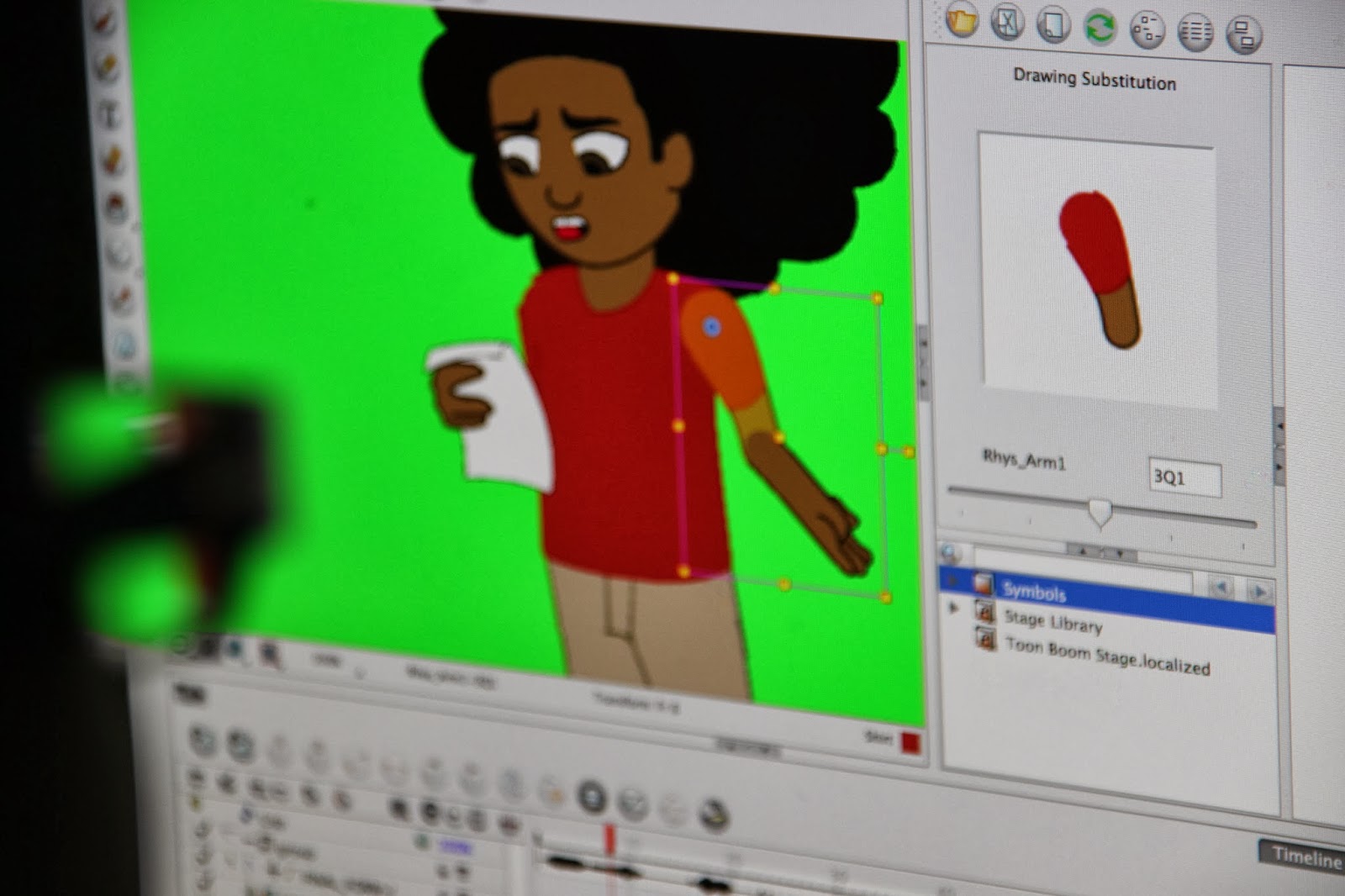Animated expressions
 |
| An animation student going through the motions of bringing an animated character to life. |
“We have the potential to become the next India,” says Dianne Wan, replete with animated gestures and packed with conviction.
Wan, instructor of animation at Caribbean Institute of Media and Communication (CARIMAC) at the University of the West Indies (UWI) is not referring to Jamaica becoming the next ‘curry capital’ of the world, but the hub for animation.
For Wan, the love affair with animation began early, and like every youngster and their fantasy world, she was glued to cartoons. “I used to watch Disney movie tapes over and over, till they jammed and could no longer be played,” she said.
Growing up, Wan said, that love affair blossomed into a career path.
“Animations are motion graphics,” said Wan, and like a creative thought process, they start with an ideation.
 |
| A Stylus and animation pad - the new pencil and sketch pad for animators |
Traditionally, Wan says, pencil and paper is used to build the storyboard, which is now being digitialised, stylus and animation pads are the new paper and pencil.
In a lab at CARIMAC, 28 youngsters were doing just that. They were glued to their flatscreen monitors, juggling between sketching with a stylus and controlling the storyboard with the keyboard, in precise, coordinated movements, giving life to a web of lines and turning them into coordinated shapes.
The screen is divided into a maze of complex lines, like web of fibreoptic cables converging into a network, forming a drawing board where these lines will be given life like movements. “Based on the storyboard, the background and props are drawn,” Wan said. “The next step is character rigging, which is basically to articulate the character. The layout of the scene is added next and then everything comes to life.”
Shenay Jamieson and Diavallan Fearon are two such budding animators, coming from varied backgrounds. “I want to use animation to create something to impact children’s lives,” says Jamieson, who said that her inspiration and acumen comes from her mother, a self-taught seamstress who conceptualises her own designs.
Fearon, who has been a music producer for more than two decades, is seeking a career change, something, which he says challenges his creativity and benefits the society. “I don’t want to limit myself. I see animation as a creative field where I can put out my ideas,” the Rastafarian said.
 |
| An animated character on screen |
Like Jamieson, Fearon wants to pursue the path of edutainment, “I want to create a platform to educate the people, especially the youth about our culture,” he says.
These students, imposing their art onto the computer screens, giving them movement, voice and life, are all gearing to dip their hands into the now US$222.8 billion global animation industry pie, spread across United States, Japan, India and South Korea.
“I am taking with me a lot of hope - hope to pursue a career in animation,” said Jamieson.
“The sky is the limit,” says Wan. “It (animation) is ‘labour of love intensive’, only thing that will limit you is your own imagination.”




Comments
Post a Comment